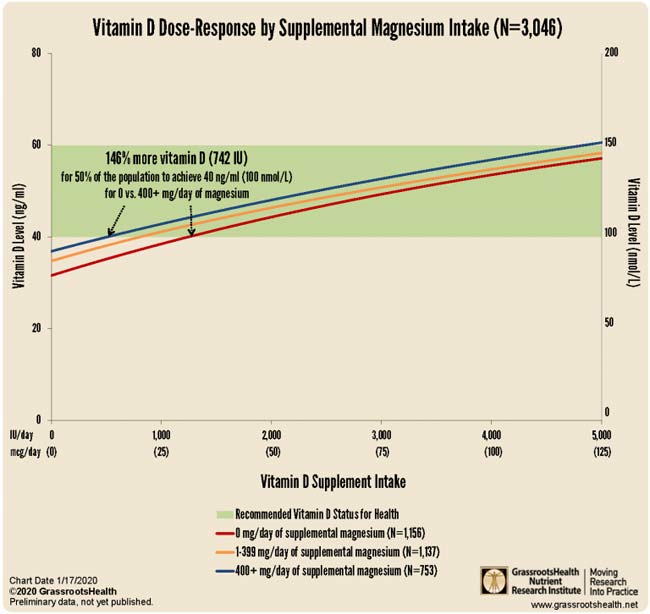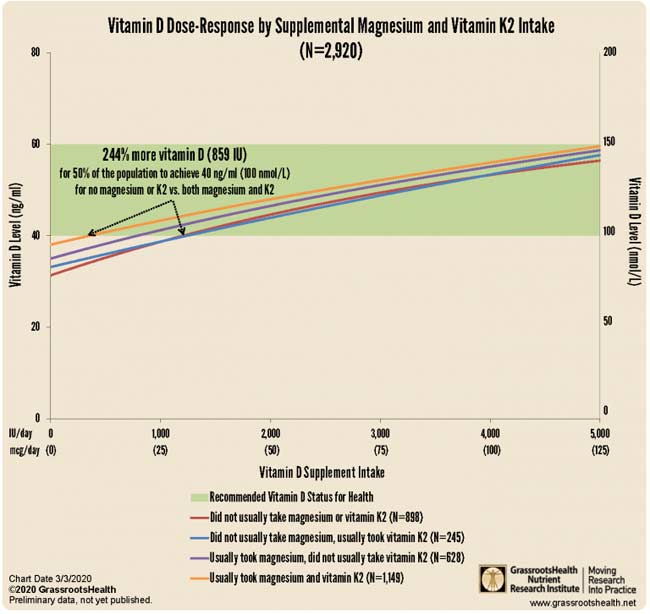Lab Just Made a More Dangerous COVID Virus
This article was previously published February 5, 2021, and has been updated with new information.
If SARS-CoV-2 has frazzled your nerves, I have bad news for you. Scientists are already cooking up more virulent and lethal versions. In a January 22, 2021, Twitter post, biotech entrepreneur Yuri Deigin highlighted a study posted on the preprint server bioRxiv at the end of December 2020, saying:1
"Ok, the prize for the craziest and most dangerous gain-of-function research goes out to Italian virologists who took SARS[-CoV-]2 and passaged it in vitro in the presence of neutralizing antibodies.2 It quickly obliged and mutated to escape them. Yay for a novel, more dangerous SARS3!"
"Passaging" refers to a genetic engineering technique where a virus is grown in a series of different animal tissue cultures. With each "pass," the virus will mutate slightly, gaining different functions.
Serial Passaging Allows Virus to Jump Species
As just one example, a potential outcome of this somewhat crude technique (considering the genetic engineering technology now available) would be that the virus could gain the ability to infect a host species it could not infect before. Some experts have speculated that this might be one way in which SARS-CoV-2 was created.
In an in-depth article3 published in New York magazine January 4, 2021, Nicholson Baker reviewed the history of viral gain-of-function research, providing the following example of serial passaging:
"Baric … described in this early paper how his lab was able to train a coronavirus, MHV, which causes hepatitis in mice, to jump species, so that it could reliably infect BHK (baby-hamster kidney) cell cultures.
They did it using serial passaging: repeatedly dosing a mixed solution of mouse cells and hamster cells with mouse-hepatitis virus, while each time decreasing the number of mouse cells and upping the concentration of hamster cells.
At first, predictably, the mouse-hepatitis virus couldn't do much with the hamster cells, which were left almost free of infection, floating in their world of fetal-calf serum.
But by the end of the experiment, after dozens of passages through cell cultures, the virus had mutated: It had mastered the trick of parasitizing an unfamiliar rodent. A scourge of mice was transformed into a scourge of hamsters …"
Scientists Have Created Coronavirus That Escapes Antibodies
So, what exactly have they come up with now? As summarized by Deigin, researchers serial passaged live SARS-CoV-2 in plasma obtained from a recovered COVID-19 patient that had a high amount of neutralizing antibodies in it.4
For clarification, you have two types of antibodies. Neutralizing antibodies are, as the name implies, antibodies that neutralize (kill) viruses and prevent infection, whereas binding antibodies cannot prevent infection.
The neutralizing antibodies in the plasma successfully and completely neutralized the virus during the first seven passages, but then, the virus mutated to evade the antibodies. As explained by the authors:5
"The plasma fully neutralized the virus for 7 passages, but after 45 days, the deletion of F140 in the spike N-terminal domain (NTD) N3 loop led to partial breakthrough. At day 73, an E484K substitution in the receptor-binding domain (RBD) occurred, followed at day 80 by an insertion in the NTD N5 loop containing a new glycan sequon, which generated a variant completely resistant to plasma neutralization."
In other words, they created a SARS-CoV-2 variant that bypasses acquired immunity and negates the immunity you normally would have after recovering from the infection. As such, it could be extremely lethal.
"Computational modeling predicts that the deletion and insertion in loops N3 and N5 prevent binding of neutralizing antibodies," the authors say, adding:
"The recent emergence in the United Kingdom and South Africa of natural variants with similar changes suggests that SARS-CoV-2 has the potential to escape an effective immune response and that vaccines and antibodies able to control emerging variants should be developed."
Selective Pressure of Vaccination May Pose a Problem
Now, further down in the paper, they point out that the reason they did this study was to determine "whether the authentic virus, under the selective pressure of the polyclonal immune response in convalescent or vaccinated people, can evolve to escape herd immunity and antibody treatment."
Since the virus can mutate to evade neutralizing antibodies, then it could potentially mutate under the "selective pressure" of vaccination as well, which in turn raises the question: If we mass vaccinate, will we end up with a more lethal virus?
The solution these researchers seem to propose is to start thinking about vaccinating people for emerging SARS-CoV-2 variants, meaning we may need to develop a new vaccine — much like the seasonal flu vaccine, — to match the circulating strains of each season.
Considering the first COVID-19 mRNA vaccines (which are most accurately described as gene therapy) are wreaking absolute havoc on people's health already, the idea of implementing a twice-a-year gene-therapy regimen against COVID-19 strikes me as assured destruction of the human race.
Is SARS-CoV-2 Result of Gain-of-Function Research in Wuhan?
Jamie Metzl is a geopolitics expert, World Health Organization adviser and senior fellow at the Atlantic Council. January 4, 2021, CBS News interviewed her about the "conspiracy theory" that SARS-CoV-2 was created in a biosecurity level 4 laboratory in Wuhan, China. Metzl believes the COVID-19 pandemic is the result of an accidental leak from that lab.
This, he says, is a logical conclusion based on the facts before us. First, Wuhan is far from the southern part of China where horseshoe bats (the supposed source host) exist.
Second, the Wuhan Institute of Virology (WIV) was known to have performed controversial gain-of-function research on bat coronaviruses and, according to U.S. diplomats who had visited the lab in 2018, significant safety shortcomings were apparent.6
Third, SARS-CoV-2's closest relative (RaTG13) has been traced back to samples collected in 2012 from miners sickened after working in an abandoned mine in Mojiang. There's no trace of the virus anywhere between 2012 and 2019, until it suddenly caused an outbreak in Wuhan.
Lastly, "We see this massive Chinese cover-up," Metzl says, "destroying samples, shutting off access to databases, imprisoning journalists [and] silencing scientists."
On top of that, Metzl points out that scientists working at the WIV have been unable to account for all the viruses in their database, and level 4 biosecurity laboratories around the world have experienced many safety breaches in the past.
Investigative Committees Are Severely Compromised
As noted by Metzl — who also published an op-ed about this in Newsweek — what we need is a full, independent, all-access forensic investigation into the origin of this virus. If we don't, we will not be ready for whatever else that might be right around the corner.
He also warned that while the WHO had assembled a committee7 to investigate, China was granted veto power to decide who would be on that committee, and the primary investigation was to be carried out by Chinese representatives. The WHO's committee would then simply review their findings. This questionable setup made it highly unlikely that we would get to the truth.
Indeed, almost immediately, and as soon as the report was made public when the WHO's committee was done with their "investigation," the members of the committee raised serious concerns about its ability to conduct an unbiased investigation. One of its members was singled out as particularly ethically compromised: Peter Daszak, Ph.D., is the president of EcoHealth Alliance, a nonprofit organization that has worked closely with the WIV.
When SARS-CoV-2 first emerged in Wuhan, the EcoHealth Alliance was actually providing funding to the WIV to collect and study novel bat coronaviruses. He has publicly and repeatedly dismissed the possibility of the pandemic being the result of a lab leak.8
However, a pile of evidence collected in the months following put huge doubts on Daszak's claims,9 so much so that a U.S. GOP House Foreign Affairs Committee member called for Daszak to be subpoenaed to testify about the"disinformation campaign designed to suppress public discussion about a potential lab leak."10
Daszak Was the Fox Guarding the Hen House
Importantly, correspondence obtained by U.S. Right to Know (USRTK) show Daszak played a central role in the plot to obscure the lab origin of SARS-CoV-2 from the very beginning by crafting a scientific statement condemning such inquiries as "conspiracy theory."11,12
This manufactured "consensus" was then relied on by the media to counter anyone presenting theories and evidence to the contrary. Daszak also was the head of a second commission to investigate the origin of the virus, The Lancet COVID-19 commission,13 thereby ensuring that the "consensus" would be maintained.
Ironically, in 2015, Daszak actually warned a global pandemic might occur from a laboratory incident and that "the risks were greater with the sort of virus manipulation research being carried out in Wuhan."14 Earlier that year, he was also a key speaker at a National Academies of Science seminar on reducing risk from emerging infectious diseases.
Among the material Daszak presented at that meeting was a paper titled, "Assessing Coronavirus Threats," which included an examination of the "spillover potential" from "genetic and experimental studies" on viruses. In particular, he highlighted the danger of experimenting on "humanized mice," meaning lab mice that have been genetically altered to carry human genes, cells or tissues.
Considering Daszak's personal involvement with gain-of-function research in general, and research efforts at WIV in particular, he had more than enough motivation to make sure the blame for the COVID-19 pandemic was not laid at the feet of researchers such as himself, especially those at WIV.
As part of these investigative committees, any conclusions they came up with was suspect. In fact, according to reports, the original WHO commission had no intention of investigating either the WIV15 or the lab escape theory!16 Not surprisingly, in June 2021, the Daily Mail reported that Daszak was removed from the COVID commission looking at the origins of the pandemic “after helping secretly denounce the lab leak theory while failing to mention his close ties to the same facility.”17
WHO Appoints Second Investigative Committee on COVID Origin
With mounting evidence that the virus may have come from a lab, whether leaked or intentional, WHO's director general Tedros Ghebreyesus has decided that a second investigation is needed. "Despite the WHO's initial findings, Tedros has called for audits of Wuhan laboratories, including the Wuhan Institute of Virology, which some scientists believe may be the source of the virus that caused the first infections in China," NPR reported.18
Ghebreyesus announced the appointment of the new, 26-member committee October 13, 2021 — and Daszak is not a part of it. In an editorial in the journal Science, Ghebreyesus wrote:19
"The newly established World Health Organization (WHO) Scientific Advisory Group on the Origins of Novel Pathogens (SAGO)20 presents an unprecedented opportunity to better guide studies that specifically investigate high-threat pathogens.
Its mandate is to advise the WHO on developing a framework to define comprehensive studies on the origins of such pathogens, including SARS-CoV-2 — information that is essential for developing policies and enhancing preparedness to reduce the possibility of future zoonotic spillover events (transmission of a pathogen from animals to humans) and the chance that those events become major outbreaks …
… it's clear that the scientific processes have been hurt by politicization, which is why the global scientific community must redouble efforts to drive the scientific process forward. In forming SAGO, experts were selected (from an open call for applicants) with diverse technical expertise from countries in all six WHO regions …
… laboratory hypotheses must be examined carefully, with a focus on labs in the location where the first reports of human infections emerged in Wuhan. A lab accident cannot be ruled out until there is sufficient evidence to do so and those results are openly shared."
Links to US Commissioned Research

>>>>> Click Here <<<<<
While most of the focus has been on the WIV, the U.S. and other Western nations are not without blame. In the video above, "The Next Revolution" host Steve Hilton reviews the origin of COVID-19, linking the outbreak to research around the world.
He starts reviewing research done by the Erasmus Centre in the Netherlands 10 years ago. There, they were able to get an influenza A/H5N1 virus to mutate and become airborne by injecting it into ferrets. This led to an explosion of gain-of-function virus research all around the world. Interestingly, that Dutch study was funded by none other than Dr. Anthony Fauci's National Institute of Allergy and Infectious Diseases (NIAID).
While the original intent may have been noble — stay a step ahead of nature so we're not surprised by natural mutations that might threaten the human population — by creating more virulent pathogens, the work itself ends up posing significant risk.
This was why, in 2014, the Obama administration put a moratorium on gain-of-function research after recent biosafety incidents had highlighted the risky nature of such study. The moratorium included pausing gain-of-function research on influenza, MERS and SARS viruses.
However, as noted by Hilton, Fauci has long been a steadfast advocate of this kind of research, and shortly before the moratorium was put into place, he had funded a project to assess the risk of bat coronavirus emergence and the "spillover potential at high-risk human-wildlife interfaces in China." At the end of that project description, they state:
"Predictive models of host range (i.e. emergence potential) will be tested experimentally using reverse genetics, pseudovirus and receptor binding essays, and virus infection experiments across a range of cell cultures from different species and humanized mice."
This is precisely the kind of research the Obama administration placed a moratorium on, but Fauci didn't drop it. Instead, he contracted it out to the EcoHealth Alliance — the group run by Daszak. Daszak himself was the project leader. Over the next six years, EcoHealth Alliance received $3.75 million for projects relating to this investigation.
Fauci, Daszak and the WIV Appear To Be Key Culprits
Daszak, in turn, subcontracted out a key piece of the research — the gain-of-function part — to the WIV. In his report, Hilton reviews some of the papers published throughout this project, proving they were indeed part of the research Fauci funded.
He points out that while many admit the NIAID funded the WIV in general, a paper co-written by Daszak and Shi Zhengli, proves Fauci funded gain-of-function research on bat coronavirus specifically.
After Hilton's team reached out to the NIH and Fauci for comment, the paper mysteriously disappeared. The paper in question, published in 2017, shows they built various chimeras based on bat coronaviruses collected. They then infected human cells with these chimeras in the lab, proving that their manmade viruses could replicate.
The genetic changes they made to these chimeras "unlocked a specific doorway to the human body," Hilton explains, and this doorway is precisely the one SARS-CoV-2 uses, namely the ACE2 receptor.
While none of the genetically engineered viruses described in that 2017 paper is identical to SARS-CoV-2, the paper proves it's possible to create these kinds of viruses using current technologies. What's more, that project continued for another three years, which puts us into 2020. During those three years, any number of new variants may have been created.
In light of the evidence, Fauci's role as chief medical adviser to the White House and leader of the coronavirus task force is "completely untenable," Hilton says. Indeed, his conflicts of interest make Fauci just as unsuitable for these roles as Daszak is for the ones to which he was assigned.
They're both involved up to their eyeballs in the research that may be the very source of this pandemic, yet both have been placed in key roles to inform, guide and direct the public on these matters. It's scientific corruption at its finest.
Surely, there are other experts out there who would be just as, if not more, qualified for these roles. "Fauci must step aside until we get to the bottom of his role in creating — unintentionally, of course — this catastrophic global pandemic," Hilton says. We also need to know whether the U.S. government is still funding research that could lead to another, even more devastating pandemic.
from Articles https://ift.tt/3jsrU7n
via IFTTT
 As plastic ages or is exposed to heat or stress, it can release trace amounts of some of its ingredients. Of particular concern are bisphenol-a (BPA), used to strengthen some plastics, and phthalates, used to soften others.
As plastic ages or is exposed to heat or stress, it can release trace amounts of some of its ingredients. Of particular concern are bisphenol-a (BPA), used to strengthen some plastics, and phthalates, used to soften others.
